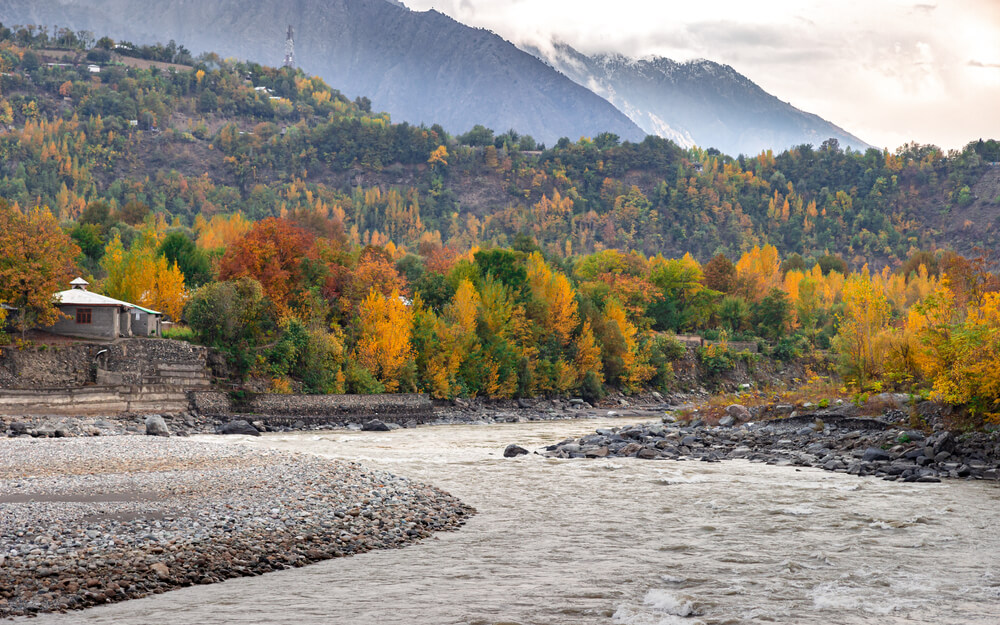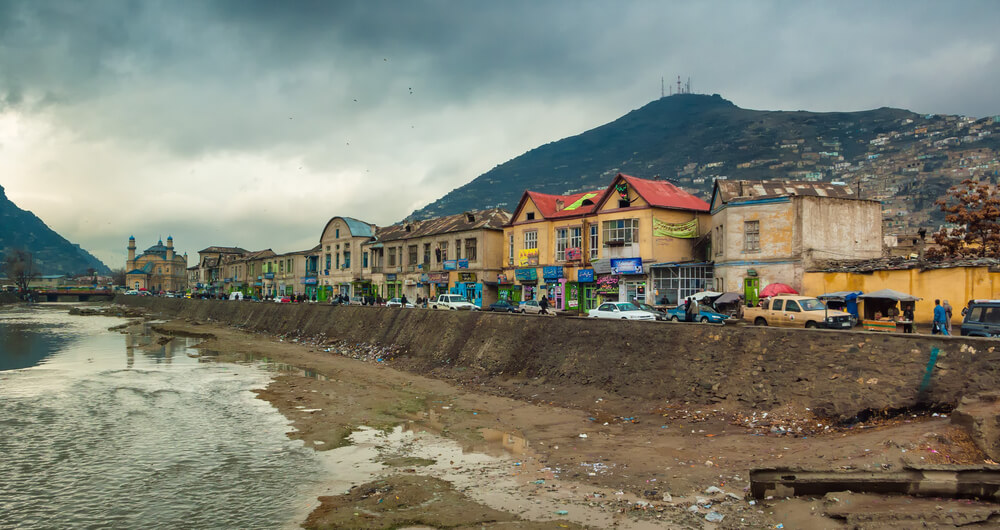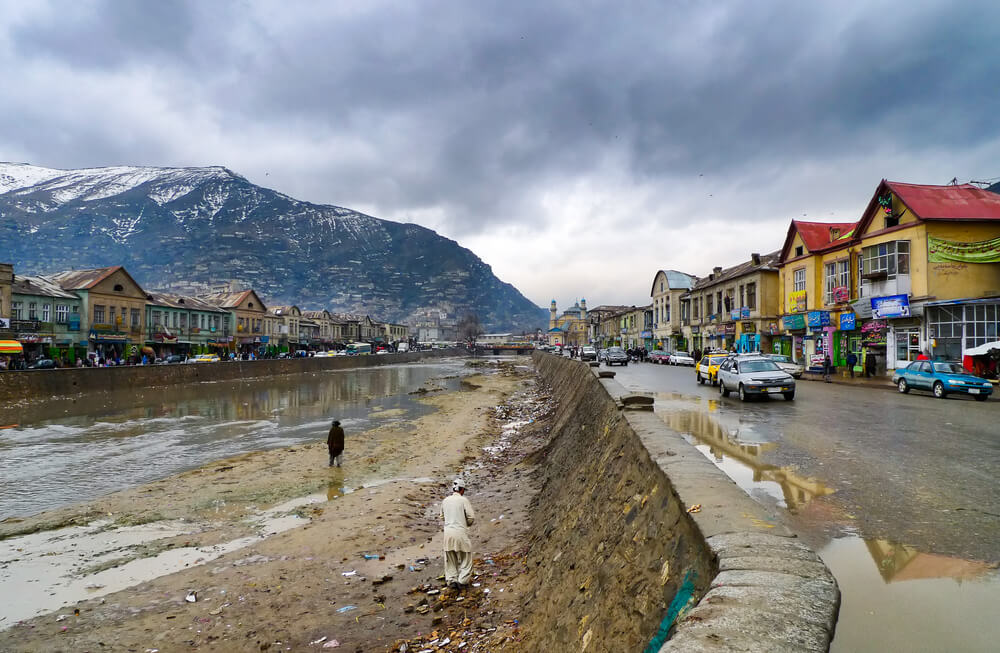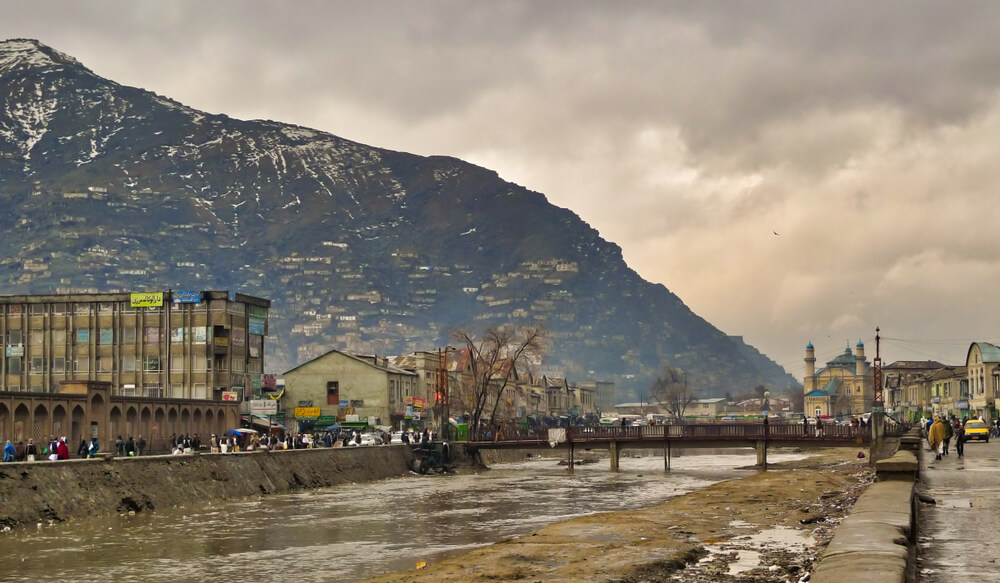Kabul River Pakistan
The Kabul river is a classical cophen. The length of the Kabul river is 700 km (430 mi) and appears in the Sanglakh range of the Hindu Kush mountains in the northeastern region of Maidan Warsak province, Afghanistan. It is segregated from the watershed of the Helmand River by the Unai Pass. The Kabul river evacuates its water into the Indus River near Attock, Pakistan. Kabul is the principal river of eastern Afghanistan and the Khyber Pakhtunkhwa province, Pakistan. It is one of the most important rivers in Pakistan.
Kabul River Route
The River appears in the Sanghlakh Range 45 miles ( 72 km ) west of Kabul city; it flows east past Kabul and Jalalabad, north of Khyber Pass into Pakistan, and Past Peshawar. It merged with the Indus River northwest of Islamabad.
Location
The river originates from the District Chitral and moves to Afghanistan. The Kabul river is also known as Sarchashma in its upper reaches. The main streamlet of the Kabul rivers is the Logar, Panjshir, Alingar, Surkhab, Bara, Kunar, and Swat rivers.

What is the Kabul river famous for?
The river is famous for its water utilization. About 20 million people in Afghanistan and Pakistan depend on the River for drinking water, Hydropower Generation, irrigation, livelihood, and other amusement activities.
Tributaries of the Kabul River
The melting glaciers of the Hindu kush range in Afghanistan, Chiantar, and Chitral form a small tributary that passes from the valley of Kunhar and Chitral. Kunar river contributes significantly to the river after merging with it at Jalalabad. Chitral glaciers nourish the Kunar river, which forms the Mastuj river, joins the Bashgal river, and ultimately merges with the Kabul river. The Major tributaries of the Kabul river are Logar, Panjshir, Alingar, Surkhab, Kunar, Bara, and Swat river.
Dams built on the Kabul River in Pakistan
Detail of the Dams built on the Kabul river is given below.
Naghlu Dam
The Naghlu Dam is a gravity Dam located on the Kabul river in the District of Surobi in Kabul Province, Afghanistan. The distance of this Naghlu dam from the capital Kabul is 40 km ( 25 mi ). The Major objective of this Dam is to produce Hydroelectricity. This dam aids a power station with a design capacity of 100 MW of electricity. The National grid of Afghanistan is linked with Naghlu Dam, a giant power plant in the country. It supplies electricity to approx—100000 households in the region of Kabul. The height of Naghlu Dam is 110 m ( 361 ft ), and the length is 280 m ( 919 ft )and has a storage capacity of 550,000,000 m3. The Afghan Ministry of Energy and Water managed and controlled the Naghlu dam and its reservoir. The Soviet Union financed the construction of the Naghlu Dam between January 1960 and 1968.

Darunta Dam
The Darunta Dam is situated on the Kabul River near Darunta, approximately 7 km ( 4.3 mi ) west of Jalalabad, the capital of Nangarhar province in eastern Afghanistan. The Soviet Union (USSR) companies financed the construction of the Darunta Dam in 1964. The Darunta Dam power station consists of three vertical Kaplan turbines(six-blade propellers ) that produce an output of 3.85 megawatts ( 5,160 hp ) each.
Warsak Dam
Warsak Dam is a solid concrete gravity dam on the Kabul River in the Peshawar valley, about 20 km northwest of Peshawar City in the Khyber Pakhtunkhwa province of Pakistan. Warsak Dam was accomplished under Colombo Plan, which has two phases, and the Government of Canada financed it. The first stage consisted of constructing the Warsak dam, which was completed in 1960. Tunnels for irrigation and fitting four power generation units, each unit having a capacity of 40 MW with a 132 kV transmission system, were also completed in 1960. Another two generating units of 41.48 MW capacity were installed in 1980-81 in the second Phase. The accumulated installed capacity of the Warsak Dam Hydropower project is 243 MW.
Pak-Afghan Treaty and Kabul River
This treaty to manage the river basin would benefit both the countries, Pakistan and Afghanistan, but deep mistrust and circumspection needs to be improved or more robust. Pakistani officials and experts have repeatedly given calls for negotiation and suggestions, but Afghanistan did not respond in kind. Both countries plan to utilize their water assets to meet their water, food, and electricity requirement against the rapidly increasing population.

Where is the Kabul River?
The River appears in the Hindu Kush, gaining significant flow from the Kunar. Many small rivers arising in Pakistan’s Chitral region flow east past Kabul and Jalalabad before entering Pakistan. In Pakistan, the Kabul river is expanded by the Swat River and its tributaries before it evacuates into the Indus at Attock.
Kabul River in Afghanistan
The River contributes a fourth of Afghanistan’s freshwater. Most significantly, five million residents of Kabul and Jalalabad depend on Kabul water for all their needs. Only 28% of Afghan families are connected to power supply systems, suffering greatly from severe electricity shortages. Dams produce less than 300 megawatts of electricity.
Kabul River in Pakistan
In Pakistan, the Kabul river and its streamlet are vital for meeting the drinking water and hygiene needs of the more than two million residents of Peshawar, irrigation in the small but fertile Peshawar valley, and the Sub-region of Tank, D.I.Khan, Banuri, and North Waziristan. This river helped produce 250 MW of electricity in the Warsak dam in 1960 and later extended to produce more. Significant factors, like growing population, poor infrastructure, budget deficit, and, lately, harmful effects of climate change, led to a drastic decline in water availability in Pakistan.
Kabul Basin Treaty
Both countries only discussed the water issue when Afghan Finance Minister Hazrat Omer Zakhilwal visited in August 2013. As per the media report, the two counties had jointly agreed to construct and manage a vast 1200- 1500 MW hydropower project on the Kunhar River, but no one pursued or taken any follow-up. Pakistani government established a technical committee in 2003 and 2005 to draft a water treaty with Afghanistan. Still, it did not proceed due to a shortage of data on the river flow in the Kabul Basin. The World Bank responded positively to a joint request by Islamabad and Kabul. Recently it congregated informal conferences between water experts of the two countries in Abu Dhabi, but the result still needs to be clarified. The World Bank is qualified to support Afghanistan and Pakistan in negotiating and sorting out a Kabul Basin Treaty. Cooperation in using the Kabul Basin water would benefit both countries.

What to pack for visiting Kabul River Tourist Spots
The tourists must-have essentials that help fulfill their needs and are rarely available. A few are mentioned below.
Clothes ( as per weather requirements)
Rain Jacket
Sunglasses
Towel
First Aid Kit
Water bottles
Swimsuit etc
Kabul River Bridge
One of the most outstanding bridges made on the river is the Kabul River Bridge, built on the M-1 Motorway Road, which joins Peshawar, Charsadda, and many other areas close to these two regions. One more bridge is constructed on the river in Sadaryab, connecting the Daudzai, Naguman, and Sardheri with District Peshawar.
Famous Tourist Spots on Kabul River Pakistan
Below is the detail of tourist spots near the Kabul River
Sardaryab Peshawar
Sardaryab is a famous tourist and picnic place near Peshawar in Khyber Pakhtunkhwa, Pakistan. It is located in Charsadda District on the Kabul river bank, 20 km ( 12 mi ) northeast of Peshawar. It is the best place for amusement, fresh fish eating, and boat riding. Sardaryab offers a family park and other entertainment activities where visitors are constantly amused. Sardaryab is one of the economic zones and the most significant fishing region on the Kabul river.
Presidential Palace
The Arg is the presidential palace of Afghanistan, situated in Kabul. It became a meeting place for the Cabinet of Afghanistan after the elimination of the Afghan Presidency by the Taliban in 2021.
Babur Garden
A historic park in Kabul, Afghanistan, is the garden of Babur, also the tomb of the first Mughal emperor Babur. This avenue garden was constructed on Babur’s order in Kabul and developed in 1528.
Kabul Zoo
The Kabul Zoo is situated in Kabul, Afghanistan, on the bank of the Kabul River and adjacent to the Deg Mazang circle.
The National Museum of Pakistan
The National Museum of Pakistan, also known as the Kabul Museum, is a double-story building 9 km southwest of the center of Kabul in Afghanistan. The Museum has been under significant consideration for expansion since 2014 to meet international standards.
Kabul River Park
Kabul River Park is also a tourist place near the Kabul river in Khyber Pakhtunkhwa.
Kund Park
This Kund Park, constructed in 2000, is an animal theme park in Nowshera Khyber Pakhtunkhwa, Pakistan. Kund Park serves as a conservation center and safehouse for Asian black bears and Himalayan brown bears. Many other varieties of animals exist here, like a leopard, species of cranes, deer, ducks, parrots, peafowl, and pheasant.
Serajul Emarat Park
Serajul Emarat is the top most-rated tourist attraction in Jalalabad, Afghanistan.
Shah Du Shamshira Jamia Mosque
As its name indicates, it is the name of the Mosque of the King of Two swords. It is a Yellow two-story mosque in Kabul, Afghanistan, on Andarabi Road.
Band e Amir National Park
Band e Amir National park is the first national park constructed on April 22, 2009. Its purpose is to develop and secure the natural beauty of a series of highly blue lakes formed by natural dams high in the Hindu Kush. Band e Amir is a series of six lakes in the mountainous desert of central Afghanistan.
Pul – e Kheshti Mosque
Pul e Kheshti Mosque is a massive mosque in Kabul, Afghanistan, in the center of old Kabul. The large Blue Dome is the symbol of identification of the Pul e Kheshti Mosque. The mosque was initially constructed in the 18 century but later reconstructed under Zahir Shah in the late 1960s
Khyber Pass
The Khyber Pass is a mountain pass in the Khyber Pakhtunkhwa province of Pakistan, on the border with the Nangarhar province of Afghanistan. It links Peshawar valley and Landi Kotal town at Jamrud by crossing part of the White Mountains.
Interesting Facts about the Kabul River
1- The Kabul River is a 700 km ( 430 mi ) long river that appears in Maidan Wardak Province in the Sanglakh Range of the Hindu Kush mountains in Afghanistan and is isolated from the watershed ( drainage Basin) of the Helmand River by Unai Pass.
2- The Kabul River evacuates into the Indus River near Attock, Pakistan. It is the major river in eastern Afghanistan.
3- The main tributaries of the Kabul River are Logar, Panjshir, Kunar, Surkhab, Alingar, Bara, and Swat Rivers.
4- The Kabul River late gave its name to the state and the Settlement of Kabul.
5- Many Dams enclose the Kabul River. The Surobi, Naghlu, and Darunta Dams are in Afghanistan’s Kabul and Nangarhar Provinces. The Warsak Dam is in the Peshawar valley in Pakistan, about 20 km northwest of Peshawar city.
FAQS
How deep is the Kabul river?
The Kabul river with a length of 700 km ( 430 mi ) and a Basin size is 70,500 km2 ( 27,200 sq mi) with an elevation of 2,400 m ( 7,900 ft ).
Where does the Kabul River meet the Indus River?
The Kabul River meets the Indus River at Attock.
Which Dam in Pakistan has been built on the Kabul River?
Warsak Dam is a mass concrete gravity dam situated on the Kabul River in the Peshawar valley about 20 km northwest of Peshawar in the Khyber Pakhtunkhwa province of Pakistan.
Conclusion
This River plays an essential role in meeting the requirement of the people of Afghanistan and Pakistan; this river water could be more beneficial if Kabul Basin Treaty got approved between both countries, i.e., Afghanistan and Pakistan. Different Dams have been constructed for hydropower generation. Kabul river serves inhabitants domestically and is a good tourist spot for visitors’ amusement. The river valley is a natural route for travel between Pakistan and Afghanistan. The Kabul water greatly helps irrigation as it is extensive in Jalalabad and Peshawar areas.
